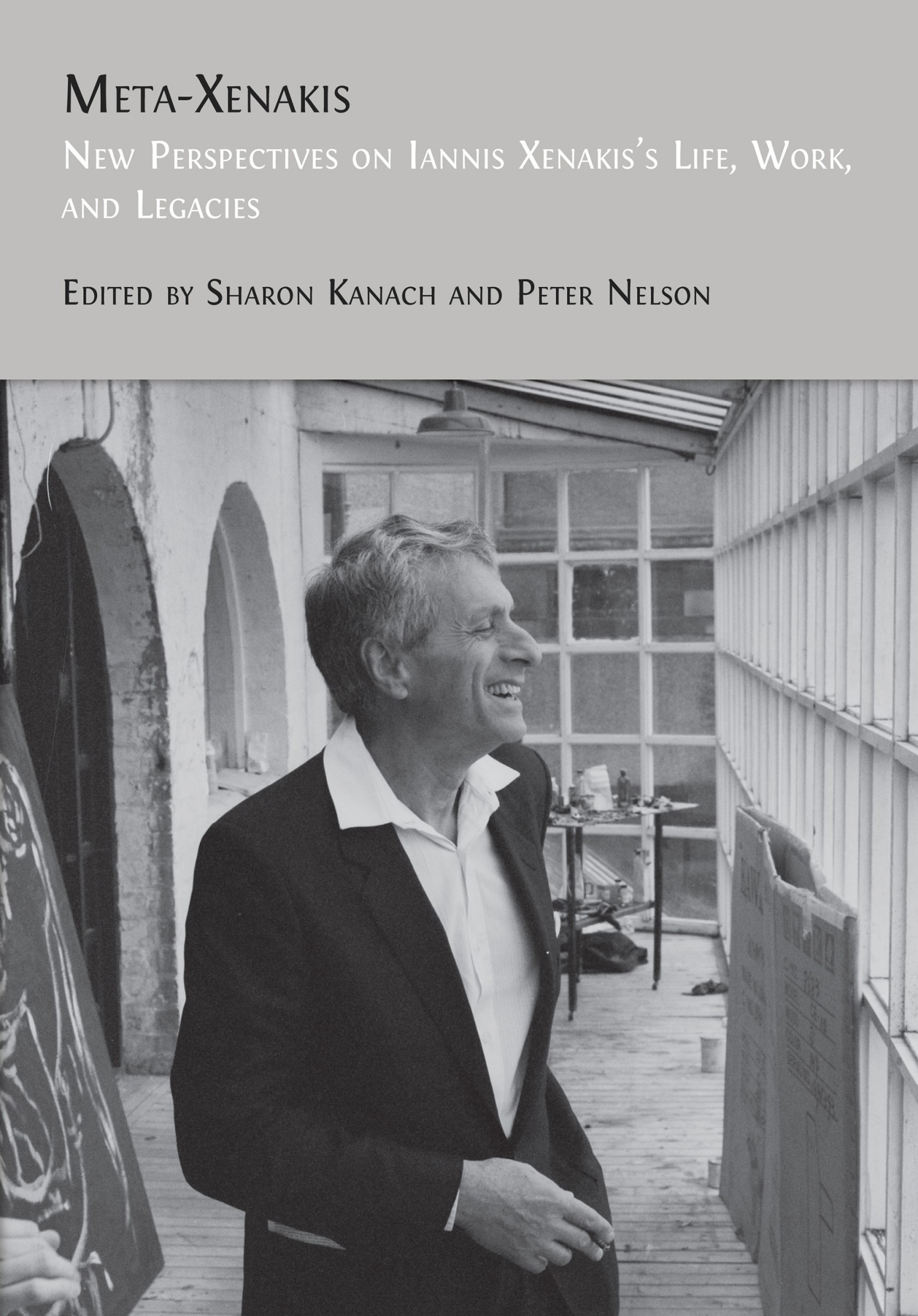25. La Légende de Xenakis: Meta Xenakis
Curtis Roads
© 2024 Curtis Roads, CC BY-NC 4.0 https://doi.org/10.11647/OBP.0390.27
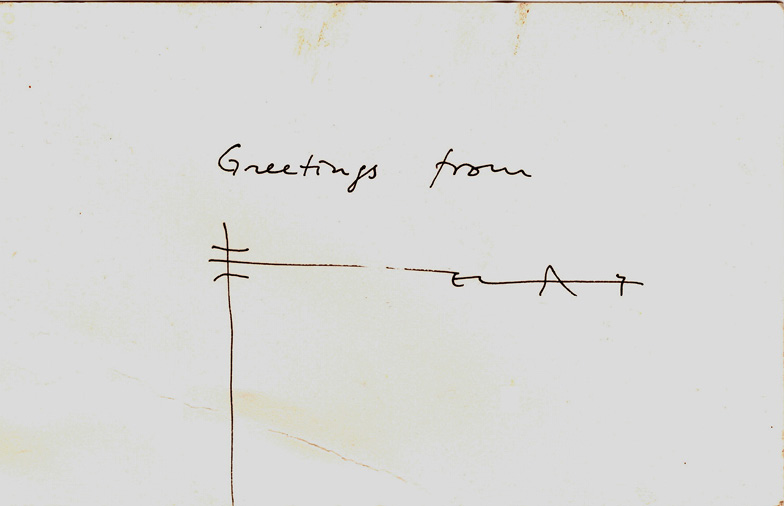
Fig. 25.1 Personal communication from Iannis Xenakis to the author (1985).
This is a personal account of the impact Iannis Xenakis had on my life over several decades.1 To be clear, I am not an expert on Xenakis’s life. These recollections view Xenakis through the narrow lens of my encounters with him. It has been wonderful to sift through my memories to reconstruct this narrative.
To begin, it is important to describe the historical milieu of my earliest encounter with Xenakis. In 1970 I was a nineteen-year-old professional musician living in a commune with twenty-four other people in Urbana-Champaign, Illinois—the home of the University of Illinois. I was learning about the music business and becoming less and less interested.
At the same time, my aesthetic perspective was rapidly evolving. I was going to concerts of classical music at the university but also concerts of new experimental music. On my own I was experimenting with sounds using available equipment.
In a lucky twist of fate, in this period the University of Illinois was a pioneering center for research in electronic and computer music. At the invitation of a graduate student friend, I started working in the University of Illinois Experimental Music Studio (EMS). The EMS was an excellent facility with a professional mixing console, four-track tape recorders, a large Moog synthesizer, and quadraphonic playback. My friend and I started making tape music pieces that we would play in various venues.
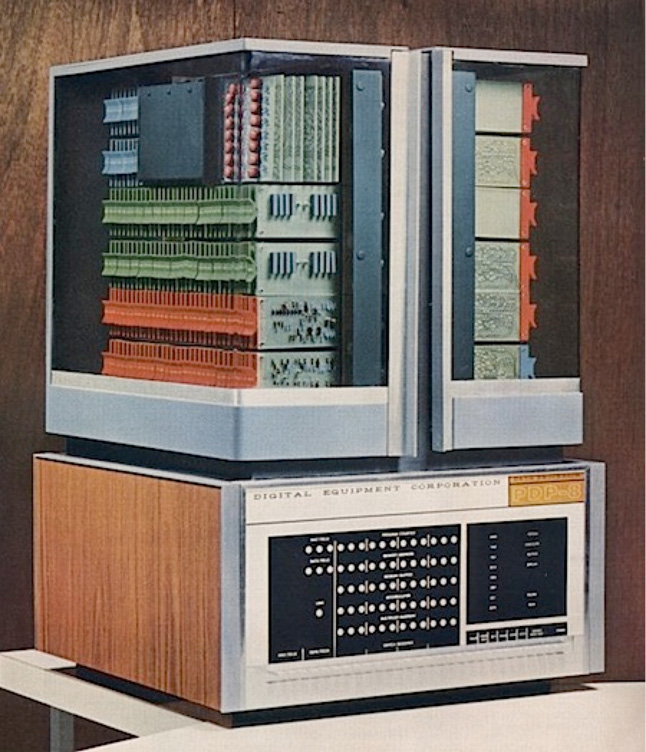
Fig. 25.2 DEC PDP-8 computer, author unknown.
The EMS also had a Digital Equipment Corporation (DEC) PDP-8 computer. It was the model with glass doors displaying the circuit boards. It was love at first sight for me. I saw the computer as a way to combine my intellectual and musical aspirations. I did not yet have a clear idea of exactly what this meant; I knew only that this direction seemed ripe with possibilities.
I met Professor Herbert Brün (1918–2000), a pioneer of algorithmic composition and experimental digital synthesis, Professor James Beauchamp (1937–2022), a pioneer of computer sound analysis and synthesis, and researcher Edward Kobrin, a pioneer of real-time interactive composition. They were all generous with their time. I was given a printout of Max Mathews’s (1926–2011) MUSIC V program, written in Fortran, which I still have.
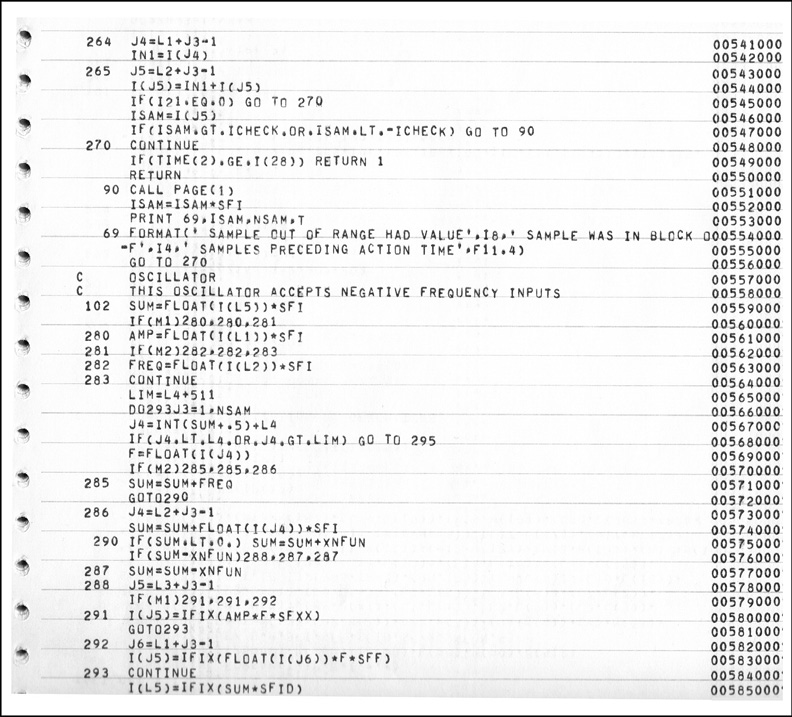
Fig. 25.3 A printout of the author’s copy of MUSIC V, written in the FORTRAN IV language (1971).
At the same time, I was becoming familiar with the music of Xenakis through vinyl recordings, beginning with Metastasis (1953–4), Pithoprakta (1955–6), and Eonta (1963), the electronic works Concret PH (1958), Diamorphoses (1957), Orient-Occident (1960), and Bohor (1962), and the orchestra and tape piece Kraanerg (1968–9).
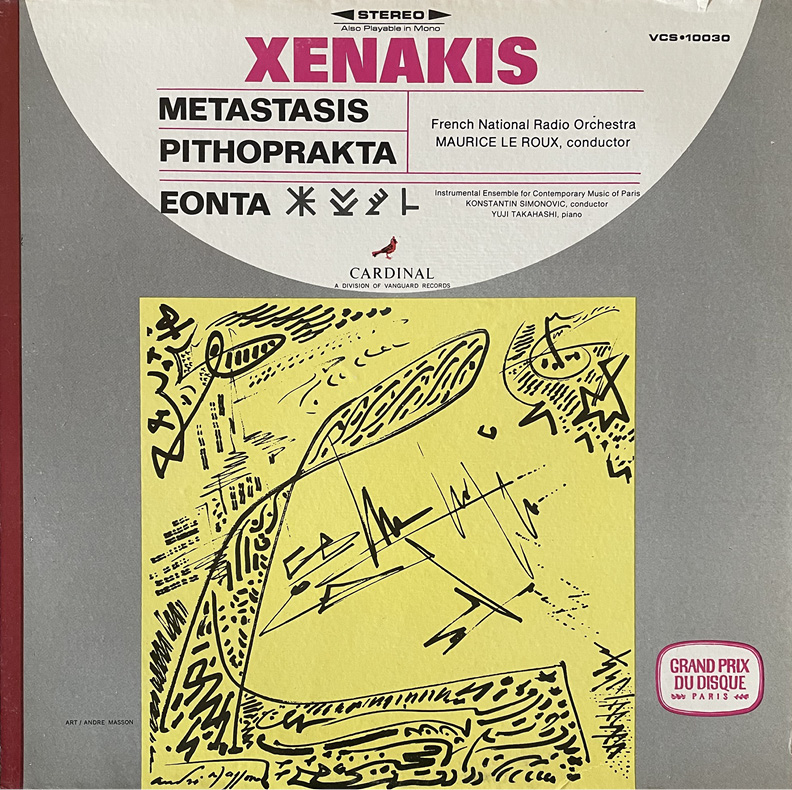
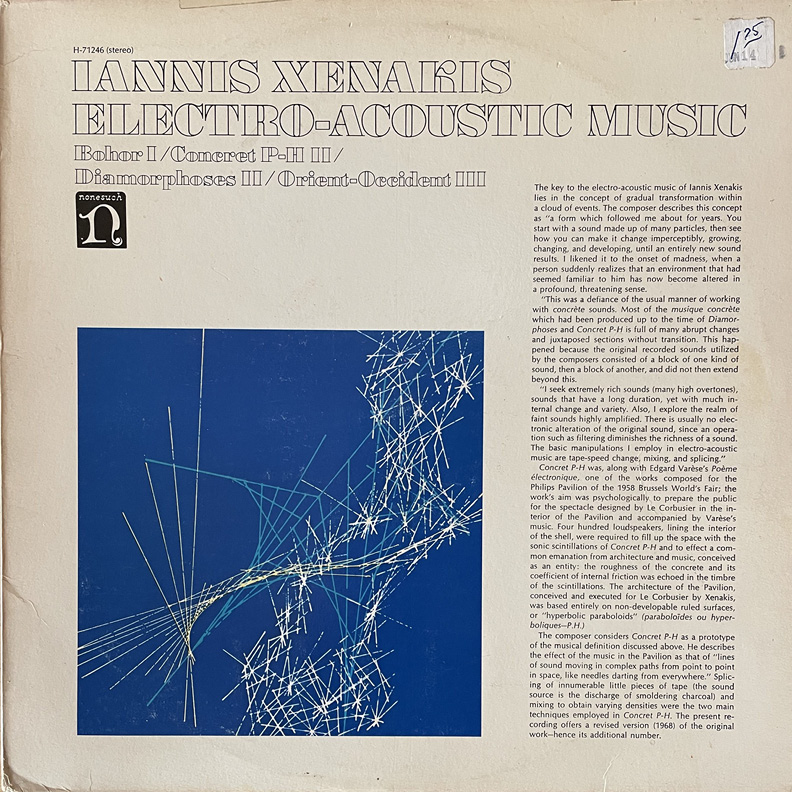
Fig. 25.4 Xenakis on vinyl. (a) Vanguard Records, 1967 release; (b) Xenakis electroacoustic music on Nonesuch Records, 1970 release, artists unknown.
First Encounter with Xenakis
In 1972 I saw a poster for Xenakis’s short course in Formalized Music at Indiana University (see Figure 25.5). I decided to enroll. Xenakis lectured at a blackboard, detailing his theories in mathematical terms. In between the lectures he played his pieces at considerable volume over four Altec-Lansing Voice of the Theater loudspeakers. Xenakis’s computer programming assistant, Cornelia Colyer (1947–2003), took us to the campus computer center to show us large plots of waveforms produced by Dynamic Stochastic Synthesis.2
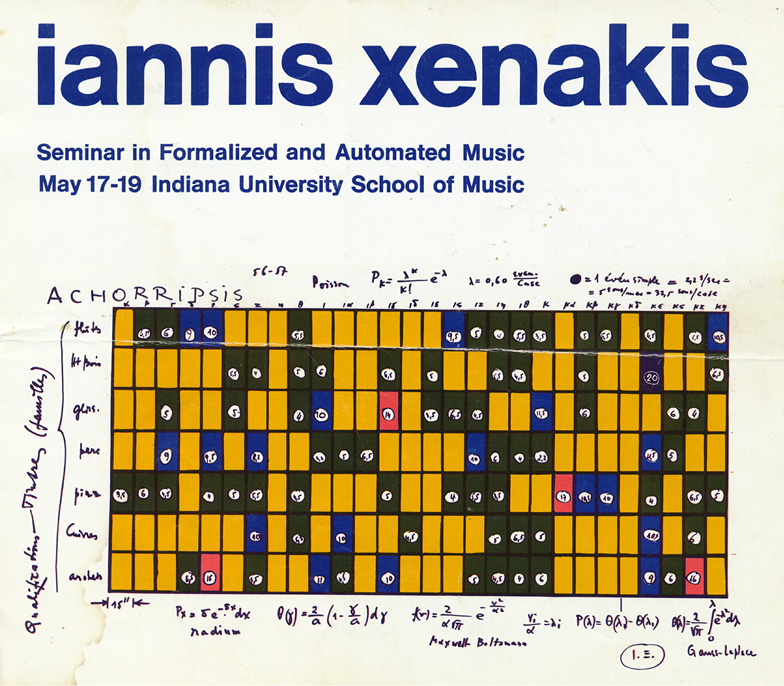
Fig. 25.5 Poster for the Seminar on Formalized and Automated Music, May 17–19, Indiana University School of Music (1972).
This encounter with Xenakis was life changing. It gave me a clear focus and direction. The idea of using algorithmic processes in music composition attracted me from an intellectual standpoint as a formidable design problem. I came away from Xenakis’s course with two specific goals:
- First, I wanted to learn how to program computers to model stochastic processes for composition. For the design of new structures such as what Edgard Varèse (1883–1965) called sound masses and Xenakis called clouds, a stochastic model seemed an appropriate starting point.
- Second, I was intrigued by the concept of granular synthesis of sound. We heard no sound examples, but the theory fascinated me.
In the summer of 1972, I visited Stanford University in California. John Chowning (b. 1934) gave me a tour of the Stanford Artificial Intelligence Laboratory where the computer music center was housed. It was a revelation. I saw advanced technology that was ten years ahead of its time.
I began to learn computer programming languages. The first was FORTRAN IV, in order to analyze Xenakis’s Free Stochastic Music program. I created a flow chart based on the analysis.3
In the fall of that same year, I enrolled as a student in music composition at California Institute of the Arts (CalArts) in Los Angeles. CalArts had just opened so everything was new and exciting. The faculty could not understand why I was interested in Xenakis’s methods, but my fellow student composers did.
In that period, CalArts had a single computer: a Data General Nova 1200 with a Teletype keyboard, printer, and paper tape reader. I studied with the mathematician Leonard Cottrell. He taught us about assembly-language programming and digital circuit design. I began to write programs that implemented the formulas in Formalized Music.4 Then I started writing my own composition algorithms.
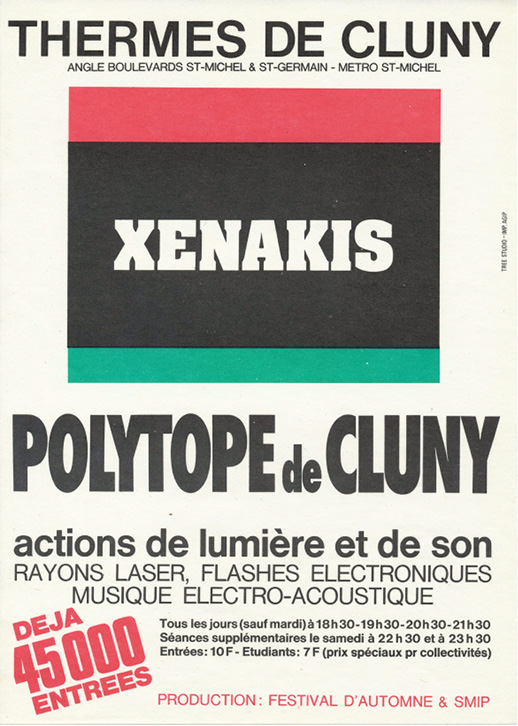
Fig. 25.6 Poster for Polytope de Cluny (1972), from author’s private collection.
In 1973, I flew to Paris to attend the Festival d’Automne. The main goal of my visit to Paris was to experience Xenakis’s sound and light spectacle Polytope de Cluny (1972) in the medieval Musée de Cluny.
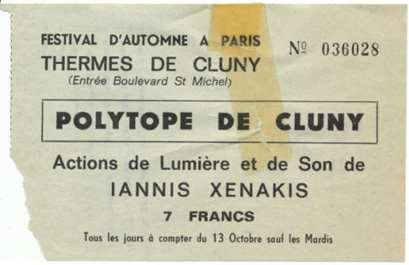
Fig. 25.7 Ticket for Polytope de Cluny (1972), from author’s private collection.
Polytope de Cluny was experienced lying on one’s back, looking up. A robotically-controlled laser projection system created moving geometric forms. A novel aspect of this movement was its stepped motion rather than smooth motion. This highlighted the quantized nature of robotic control, which was entirely new at the time. High on the ceiling was a metal grid with hundreds of flashbulbs also programmed by a digital script. Meanwhile the intense twenty-seven-minute octophonic tape of Polytope de Cluny filled the hall. I experienced the Polytope eight times. The design was extremely impressive both technically and aesthetically.5
In Paris I also attended lectures and concerts featuring Karlheinz Stockhausen (1928–2007). This included his disappointing Hymnen for Orchestra (1966–7). The contrast between Xenakis’s direction and Stockhausen’s direction was starkly different, as time would tell.
Returning to California, I was determined to synthesize granular sound by computer. I left CalArts for the University of California, San Diego (UCSD) where they had a computer science department and a working computer sound synthesis system. Later I will talk about my involvement with granular synthesis by computer.
In 1980 I moved to Cambridge, Massachusetts to work at Massachusetts Institute of Technology (MIT). I was editor of the Computer Music Journal and a researcher at the MIT Experimental Music Studio (EMS). The technology of sampling had just become available. We had an exotic new analog-to-digital converter from the Santa Barbara-based Digital Sound Corporation and a primitive command line software tool for sampling written by a student. The studio’s 300 Mbyte disc was shared by a dozen users, so space for storing samples was extremely limited. Nonetheless, I managed to sample alto saxophone tones as well as percussion. I wrote a program in C to create granular clouds that moved around the four loudspeakers of the studio. The percussion clouds sounded like drum rolls. This was the first implementation of granular sampling.
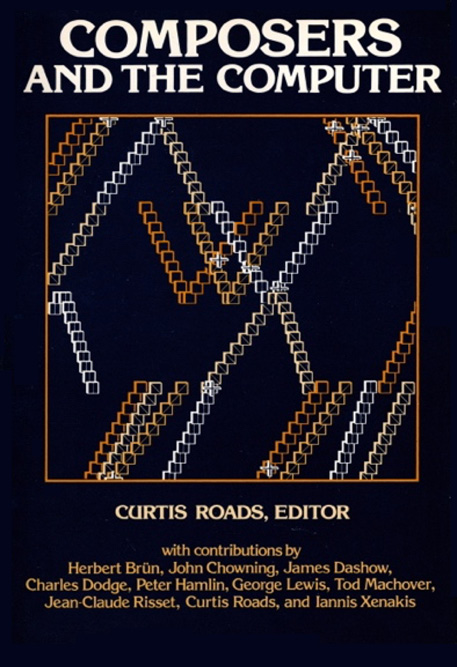
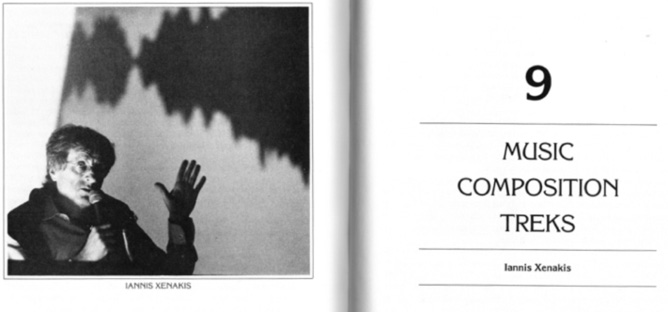
Fig. 25.8 (a) cover of Composers and the Computer (1985); (b) Xenakis’s “Music Composition Treks” in Composers and the Computer (1985).
In 1981, the IRCAM (Institut de Recherche et Coordination Acoustique/Musique) center in Paris organized a conference on “The Composer and the Computer.”6 While there, I took a side trip to visit the CEMAMu (Centre d’Etudes de Mathématique et Automatique Musicales) center in Issy-les-Moulineaux. I witnessed a demonstration of the UPIC (Unité Polyagogique Informatique de CEMAMu) system by Xenakis and his assistant Colyer. Guy Médigue (b. 1935), the lead engineer of the UPIC, was also present.
Three years later the 1984 International Computer Music Conference was held in Paris. Once again, I visited CEMAMu. Following this visit, I asked Xenakis to contribute to my book Composers and the Computer, published in 1985. He wrote the excellent essay “Music Composition Treks” for this anthology.
In the summer of 1987, I had a residency as a visiting composer at the CEMAMu, working with the UPIC system. The 1987 version of the UPIC system allowed one to play not just synthetic waveforms, but also sampled sounds for the first time. I brought a tape of alto saxophone tones. My hand-drawn UPIC scores easily created saxophone glissandi that would be difficult to achieve using the MUSIC-N style programming languages of the time.
Of course, in this period, working with the UPIC was a slow, multi-step process. You had to draw a score using ink on a large roll of paper, then manually trace every line in order to enter it into the computer, a process called digitizing. Then you would give the command to start calculating the sound. The UPIC software ran on a Thomson Solar minicomputer, which had a clock speed of 7 MHz. Thus, rendering a complex page to sound took considerable time.

Fig. 25.9 Thomson Solar 16-40 minicomputer. Photo by Damien.b (2022), Wikimedia Commons, CC BY-SA, https://commons.wikimedia.org/wiki/File:Solar16-40-ACONIT.jpg
Soon after this, I began my teaching career with a series of visiting faculty positions. In 1991 Pierre Boulez (1925–2016) stepped down from the leadership of IRCAM. As part of the regime change, I was invited to manage the software documentation service and teach in the pedagogy department.
In 1993 I departed IRCAM and was invited to teach at Les Ateliers UPIC by Gerard Pape (b. 1955). It was like a homecoming for me to return to the Xenakis fold. It was in this period that I came to know personally Xenakis and his circle. The people I met in his circle included his wife Françoise, his agent Radu Stan (1928–2021) (Editions Salabert), his editor Sharon Kanach, the arts patron René Schneider, the composers Michel Phillipot (1925–96), François-Bernard Mâche (b. 1935), and Jean-Claude Eloy (b. 1938), and the CEMAMu team including Jean-Michel Raczinski, Gérard Marino, and Marie-Hélène Serra.
Of course, Xenakis was the famous maestro, and I was an acolyte. I did not work directly for him but was rather a part of the team at Les Ateliers UPIC, working in parallel with the CEMAMu.
In my interactions with Xenakis, what struck me about him is that he was direct, unassuming, and without pretense. He exuded an aura of comradeship, rather than elitism. My impression was that the team at the CEMAMu was lucky to have such a benevolent boss.
As a composer, Xenakis was always more radical than me. In 1994 I was present at the Paris premiere of his electronic composition S.709 (1994) at the auditorium of Radio France. This piece is the raw output of his experimental GENDYN stochastic synthesis algorithm. The sound is harsh and abrasive, and the structure is bizarre. It is not one of my favorites, but I must admit that it is completely original in both concept and result.
By contrast, I abandoned algorithmic composition in my youth because I found that I was more interested in beautiful sounds than in beautiful algorithms.
Today I use algorithms for sound synthesis but rely on handicraft in the editing and mixing processes to stitch all the parts into a cohesive whole. For example, my piece Then (2016) was the result of over five hundred submixes in the period from 2010 to 2016.
Granular Synthesis
The most direct connection between Xenakis and me is granular synthesis. It was, of course, Xenakis’s concept. I found it in his book Formalized Music (1971). He cited Dennis Gabor (1900–79) (1946, 1947) as the source of the scientific theory. Years later in Paris, Xenakis gave me a copy of Hermann Scherchen’s (1891–1966) journal Gravesaner Blätter with his 1960 article on granular synthesis. It is a prized possession.
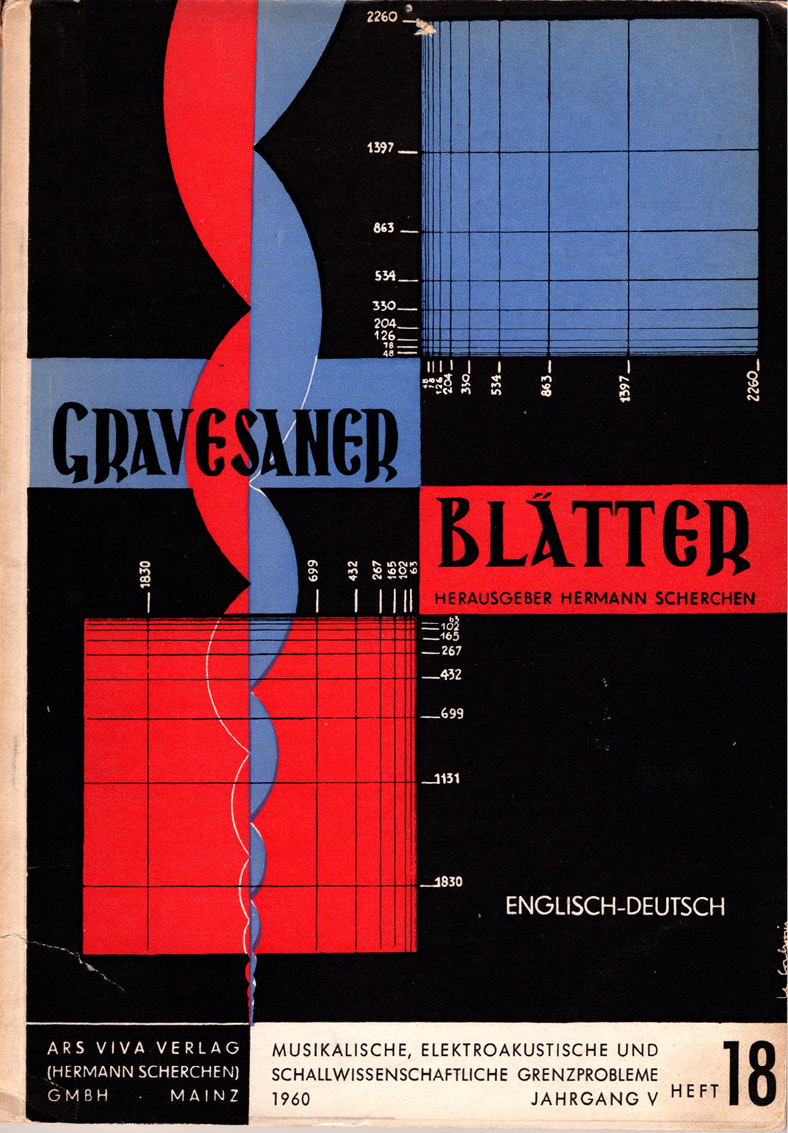
Fig. 25.10 Gravesaner Blätter, title page of issue 18 (1960).
In March 1974, I transferred to UCSD (University of California at San Diego) in order to use their facilities for computer sound synthesis. The researcher Bruce Leibig had recently installed the MUSIC V program on a mainframe computer housed in the UCSD Computer Center.7 The dual-processor Burroughs B6700 was an advanced machine for its day, but sound synthesis was difficult, due to the state of input and output technology.8
I managed to test a first implementation of digital granular synthesis in December 1974. For this experiment, called Klang-1, I typed each grain specification (frequency, amplitude, duration) on a separate punched card. A stack of about eight hundred punched cards corresponded to the instrument and score for thirty seconds of granular sound. Following this laborious experience, I wrote a program in the Algol language to generate thousands of grain specifications from compact, high-level descriptions of clouds. Using this program, I realized a six-minute study called Prototype (1975). These were the earliest manifestations of granular synthesis by computer.
Les Ateliers UPIC
Next, we skip to another point of encounter with Xenakis. The story of Les Ateliers UPIC is told in the book From Xenakis’s UPIC to Graphic Notation Today, which is a free download from ZKM Karlsruhe.9
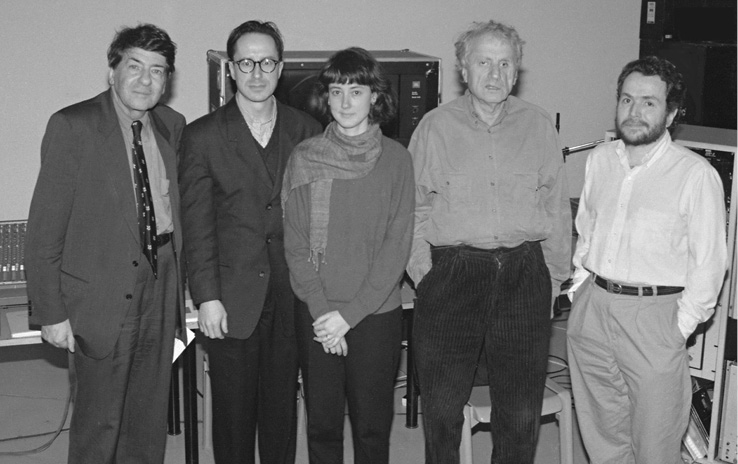
Fig. 25.11 Les Ateliers UPIC (1995). Music historian Harry Halbreich (1931–2016), Curtis Roads, Brigitte Robindoré, Iannis Xenakis, Gerard Pape. Photographer unknown.
As previously mentioned, in 1993 Gerard Pape asked me to teach at Les Ateliers UPIC. I already knew the UPIC system, but this was a new version that ran on a Windows computer with a dedicated hardware synthesizer, enabling it to synthesize sound in real-time.
Les Ateliers UPIC was a small organization supported by the French Ministry of Culture and the city of Massy, outside Paris. I became the director of pedagogy and led a year-long course. The course was a general introduction to computer music, based on my textbook The Computer Music Tutorial, which was in production at MIT Press.10
I also managed to conduct research, in particular the development of the first standalone app for granular synthesis: Cloud Generator (1995). It was written by me with John Alexander, a student at Les Ateliers UPIC. Cloud Generator was developed specifically for teaching granular synthesis. It has a simple user interface that enables a musician to generate a single cloud of sound at a time, which was saved to a file. These sound files could later be assembled into a piece using a digital audio workstation like Pro Tools.
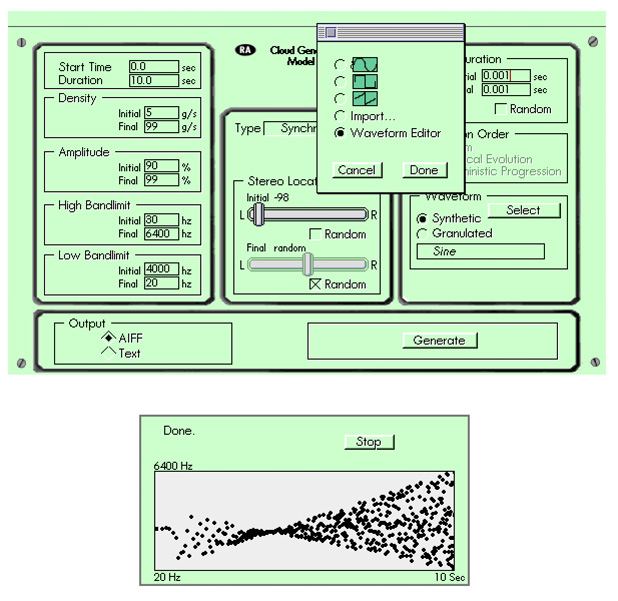
Fig. 25.12 Cloud Generator (1995) by Curtis Roads and John Alexander.
I demonstrated Cloud Generator to Maestro Xenakis. He said it was “not terrible.” Knowing him, I took this as a compliment.
After I showed Cloud Generator to Xenakis’s publishing agent, Radu Stan of Editions Salabert, Stan slipped me a cassette of Analogique A & B (1959), which was Xenakis’s first attempt to realize pure sinusoidal granular synthesis using analog sine wave generators and tape. I had never heard it before. So, twenty-one years after my first experiments, I finally heard the original granular synthesis!
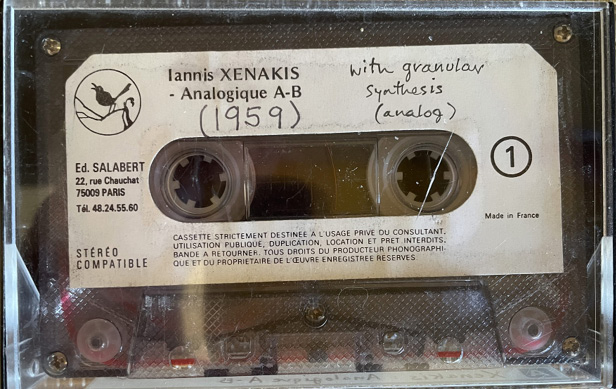
Fig. 25.13 Analog cassette of Analogique A & B (1959). Photo by author.
One of the highlights of my experience at Les Ateliers UPIC was a concert organized by Gerard Pape at the Salle Olivier Messiaen of Radio France in Paris in 1994. This included the full Acousmonium setup of forty-eight loudspeakers. Upmixing my music on the Acousmonium made an indelible impression.
After I became a professor at UCSB in 1996 I returned to Paris annually to teach at the UPIC center (renamed the Centre de Création Musicale “Iannis Xenakis” or CCMIX) until 2007. It was through CCMIX that I met Luc Ferrari (1929–2005) and Bernard Parmegiani (1927–2013), among others. Indeed, Les Ateliers UPIC/CCMIX was an open door to many artists.
Continuing the Granular Model at UCSB
In Santa Barbara I have continued to advance the granular model. My 1997 constant-Q granulator, written in SuperCollider, was the first program to apply an individual bandpass filter to each grain. This is what I call per-grain processing, where each grain has its own envelope, waveform, amplitude, frequency, spatial position, filter center frequency, and resonance. Per-grain processing is essential to create heterogeneous and multidimensional textures. The constant-Q granulator was the core tool used to make my album POINT LINE CLOUD (2005, reissued 2019).
In 2005, my graduate student David Thall coded the EmissionControl granulator, which implemented my concept of per-grain processing but also added a modulation matrix for automatic low-frequency oscillator (LFO) control of certain parameters over meso-time scales. A ramp function, for example, might modulate grain density over a period of a minute, while the user adjusted other parameters manually on shorter time scales.
Another important research direction has been the creation of an analytical counterpart to granular synthesis, called atomic composition.11
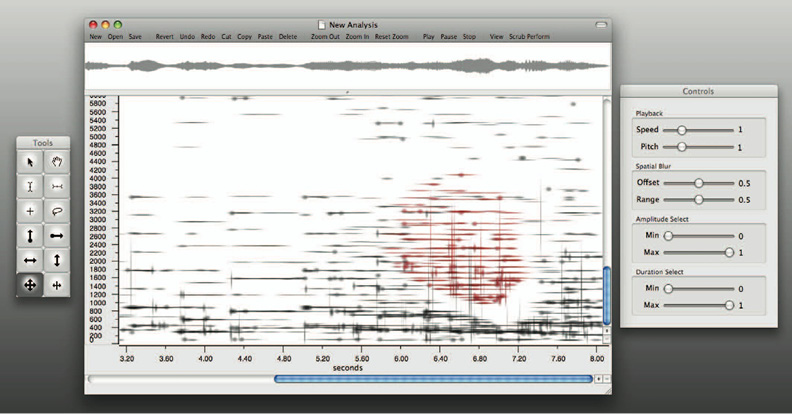
Fig. 25.14 Screenshot of SCATTER. Figure created by author (2009).
We built a prototype time-frequency editor called SCATTER, but such a model could be taken much further.
Meanwhile, the original EmissionControl granulator ran only on old Apple G5 computers, so it was time to create a new version. The original goal was simply to recreate EmissionControl for modern computers. As we proceeded however, it became clear that EmissionControl2 went far beyond the earlier program.
In October 2020, we released the new EmissionControl2 or EC2. EC2 is designed as a laboratory instrument for research in granular synthesis. As a laboratory instrument, EC2 enables detailed control over the vast parameter space of granular synthesis for the composition of extreme granular textures and gestures. In the summer of 2022, we published a second version, which adds Open Sound Control (OSC) functionality.
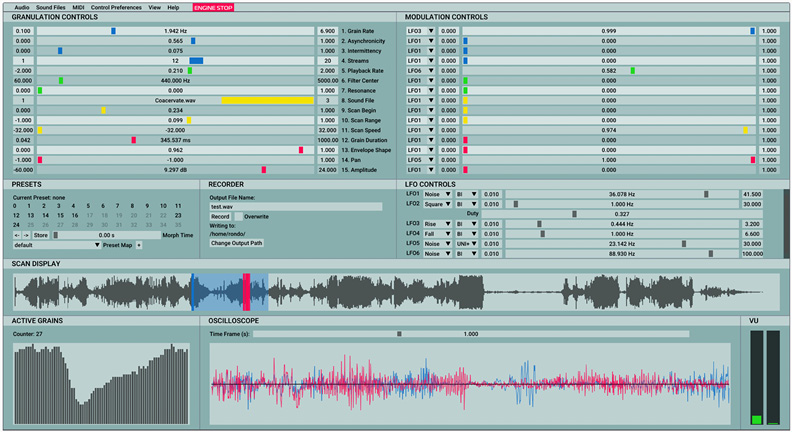
Fig. 25.15 Screenshot of EmissionControl2. Figure created by author (2021).
The main features of EC2 are:
- Per-grain signal processing.
- Granulation of N sound files simultaneously.
- Up to 2048 simultaneous grains.
- Synchronous and asynchronous grain emission.
- Intermittency control.
- Modulation control of all parameters by six LFOs with extreme ranges.
- Real-time display of peak amplitude, active grains, waveform, scan range, scanner, and grain emission.
- Scalable graphical user interface (GUI) and font size.
- Easy mapping of parameters to any MIDI or OSC continuous controller.
- Algorithmic control of granulation via OSC scripts.
- Unique filter design optimized for per-grain synthesis.
- Unlimited user presets with smooth interpolation over time for gestural design.
- Open-source code and free to download.
Since its release, EmissionControl2 has been downloaded by over 7300 musicians around the globe.
Finally, I should mention my recent book The Computer Music Tutorial, Second Edition, which presents Xenakis’s Free Stochastic Music program and devotes chapters to granular synthesis and atomic decomposition of sound.12
Conclusion
Xenakis said that he composed in order to feel less miserable.13 This is an excellent reason. But the effect of music goes beyond oneself. Composition is a service to humanity. Through music, a composer can make other people feel less miserable.
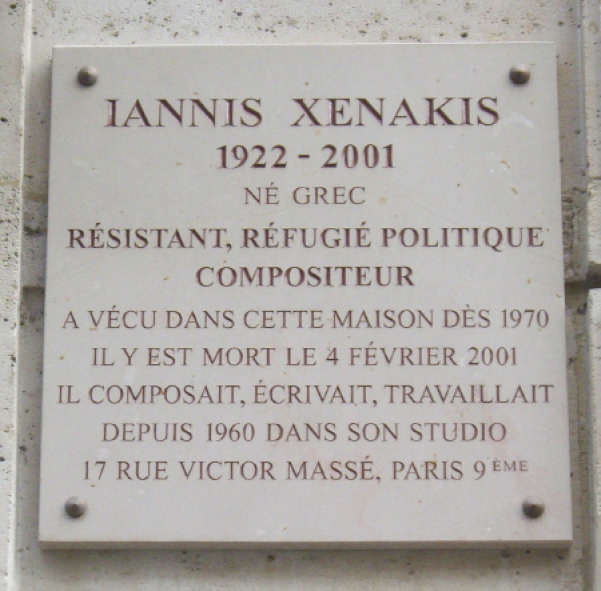
Fig. 25.16 Plaque outside Xenakis’s Paris residence. “Member of the resistance, political refugee, composer.” Photo by Mu (2010), Wikimedia Commons, CC BY-SA 3.0,
https://commons.wikimedia.org/wiki/File:
Plaque_Iannis_Xenakis,_9_rue_Chaptal,_Paris_9.jpg#/media/File:
Plaque_Iannis_Xenakis,_9_rue_Chaptal,_Paris_9.jpg
References
GABOR, Dennis (1946), “Theory of Communication,” Journal of the Institute of Electrical Engineers, vol. 93, p. 429–57.
GABOR, Dennis (1947), “Acoustical Quanta and the Theory of Hearing,” Nature, vol. 159, no. 1044), p. 591–4.
HARLEY, James (2004), Xenakis: His Life in Music, New York, Routledge, https://doi.org/10.4324/9780203342794
LOHNER, Henning (1986), “Interview with Iannis Xenakis,” Computer Music Journal, vol. 10, no. 4, p. 50–5.
MATHEWS, Max (1969), The Technology of Computer Music, Cambridge, Massachusetts, MIT Press.
ROADS, Curtis (1973), “Analysis of the Composition ST/10 and the Computer Program Free Stochastic Music by Iannis Xenakis,” student paper, unpublished.
ROADS, Curtis (1981), “Report from the IRCAM Conference on The Composer and the Computer,” Computer Music Journal, vol. 5, no. 3, p. 7–27.
ROADS, Curtis (2002), Microsound, Cambridge, Massachusetts, MIT Press, https://doi.org/10.7551/mitpress/4601.001.0001
ROADS, Curtis (2023), The Computer Music Tutorial, Second Edition, Cambridge, Massachusetts, MIT Press.
ROADS, Curtis (2024), “La légende de Xenakis,” in Reinhold Friedl, Thomas Grill, Nikolaus Urbanek, Michelle Ziegler (eds.), Xenakis—Back to the Roots: Philological Approaches to Electroacoustic Music, Vienna, mdw,
https://doi.org/10.14361/9783839474297
ROADS, Curtis, KILGORE, J., and DUPLESSIS, R. (2021), “Architecture for Real-time Granular Synthesis with Per-grain Processing: EmissionControl2,” Computer Music Journal 45(3), p. 20–38, https://doi.org/10.1162/comj_a_00613
ROADS, Curtis, KILGORE, J., and DUPLESSIS, R. (2022), “EmissionControl2: Designing a Real-time Sound File Granulator,” in Giuseppe Torre (ed.), Proceedings of the 2022 International Computer Music Conference, San Francisco, California, International Computer Music Association, p. 49–54, https://icmc2022.org/wp-content/uploads/2022/09/icmc2022-proceedings.pdf
STURM, Bob L., ROADS, Curtis., McLERAN, Aaron., and SHYNK, John J. (2009), “Analysis, Visualization, and Transformation of Audio Signals using Dictionary-based Methods,” Journal of New Music Research, vol. 38, p. 325–41, https://doi.org/10.1080/09298210903171178
VARÈSE, Edgard, and WEN-CHUNG, Chou (1966), “The Liberation of Sound,” Perspectives of New Music, vol. 5, no. 1, p. 11–19 [Reprinted in C. Boretz and E. Cone (eds.) (1971), Perspectives on American Composers, New York, Norton, p. 26–34].
WEIBEL, P., BRÜMMER, L., and KANACH, S. (eds.) (2020), From Xenakis’s UPIC to Graphic Notation Today, Berlin, Hatje Kantz, https://zkm.de/en/from-xenakiss-upic-to-graphic-notation-today
XENAKIS, Iannis (1971), Formalized Music: Thought and Mathematics in Music, Bloomington, Indiana, Indiana University Press.
XENAKIS, Iannis (1981), “Il faut que ça change!” Le Matin, 26 January, p. 28.
XENAKIS, Iannis (1985), “Music Composition Treks”, in Curtis Roads (ed.), Composers and the Computer, Los Altos, California, W. Kaufmann, p. 172–92.
XENAKIS, Iannis (2008), Music and Architecture: Architectural Projects, Texts, and Realizations, translated, compiled and presented by Sharon Kanach, Hillsdale, New York, Pendragon Press.
1 A version of this chapter also appears as Roads 2024. Sections are reprinted by permission of mdwPress. As a tribute to Iannis Xenakis, this text appears in a number of forms. This version was presented by Curtis Roads remotely as the closing keynote during the New York tranche of the Meta-Xenakis Global Symposium.
2 Xenakis, 1971, p. 247.
3 Roads, 1973.
4 Xenakis, 1971.
5 For more information and some visuals of the Polytope de Cluny, see Xenakis, 2008, Chapter 4.1, p. 225–31.
6 Roads, 1981.
7 Mathews, 1969.
8 Roads, 2001.
9 Weibel, Brümmer, and Kanach, 2020.
10 Roads, 2023.
11 Sturm et al., 2009.
12 Roads, 2023.
13 Lohner, 1986, p. 54.
